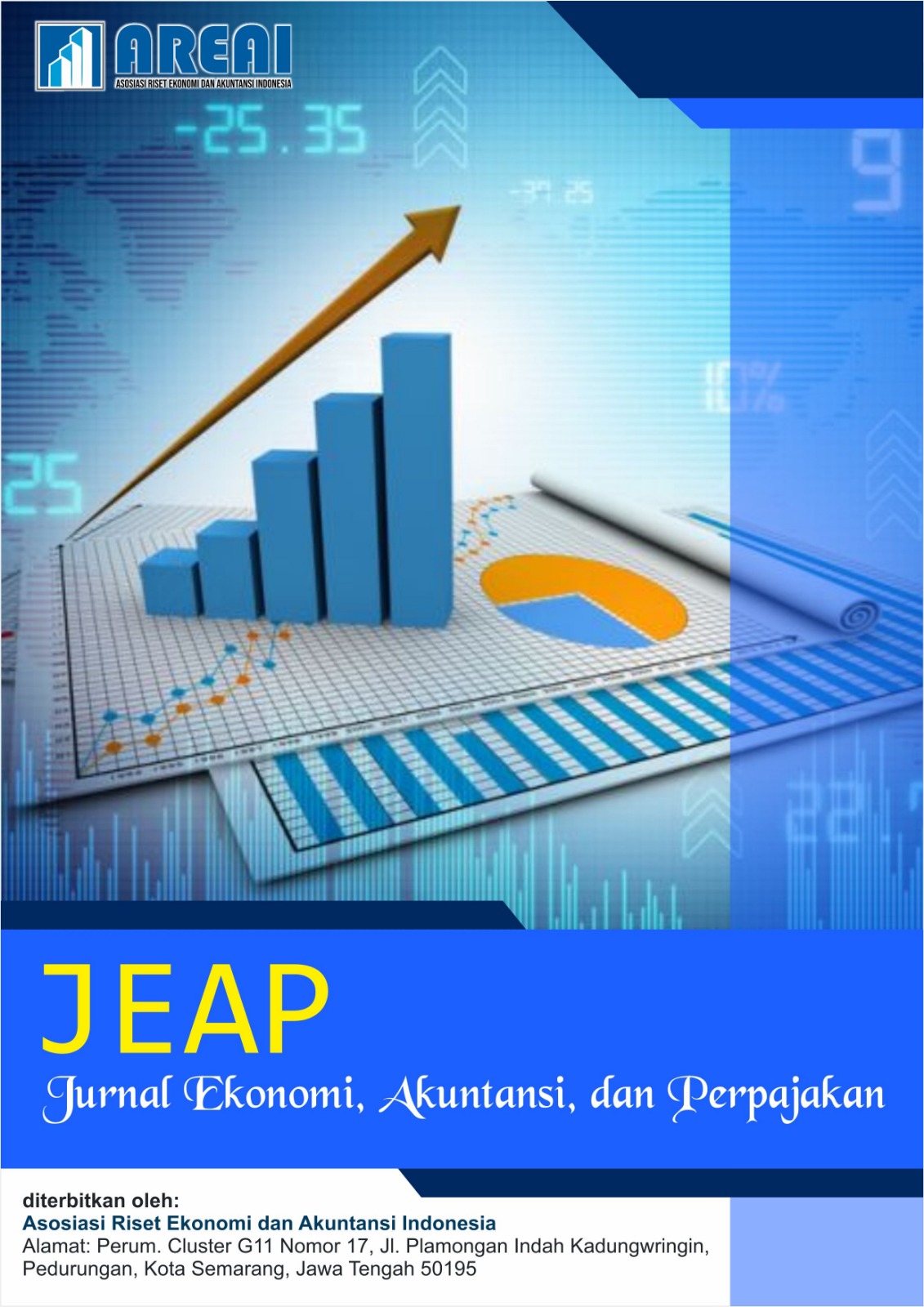Pajak Pertambahan Nilai
DOI:
https://doi.org/10.61132/jeap.v2i3.1249Keywords:
Value-Added-Tax, taxation, consumption, taxable-entrepreneurs, tax-complianceAbstract
Value Added Tax (VAT) is one of the key sources of state revenue within Indonesia’s taxation system. VAT is imposed on the consumption of goods and services domestically and is categorized as an indirect tax, meaning it is ultimately borne by the end consumer but collected and reported by taxable entrepreneurs. This study aims to provide a comprehensive understanding of the VAT mechanism, including its collection, reporting, and the challenges encountered in its implementation in Indonesia. The research method employed is a literature review using a descriptive-qualitative approach that analyzes laws, official documents, and academic literature. The findings indicate that although VAT significantly contributes to the State Budget (APBN), its application still faces several issues such as low taxpayer compliance, administrative complexity, and inequality in tax burden distribution. Therefore, tax policy reform and administrative improvements are needed to enhance the effectiveness and efficiency of VAT collection in Indonesia.
Downloads
References
Allingham, M. G., & Sandmo, A. (1972). Income tax evasion: A theoretical analysis. Journal of Public Economics, 1(3–4), 323–338. https://doi.org/10.1016/0047-2727(72)90010-2
Bird, R. M., & Zolt, E. M. (2003). Introduction to tax policy design and development. World Bank.
Braithwaite, V. (2003). Taxing democracy: Understanding tax avoidance and evasion. Ashgate.
Gunadi. (2021). Sistem pajak di Indonesia. Lembaga Penerbit Fakultas Ekonomi Universitas Indonesia.
Kementerian Keuangan Republik Indonesia. (2022). Outlook ekonomi dan reformasi pajak. Direktorat Jenderal Pajak.
Mardiasmo. (2016). Perpajakan (Edisi Revisi). Andi.
Mirrlees, J. A. (1971). An exploration in the theory of optimum income taxation. Review of Economic Studies, 38(2), 175–208. https://doi.org/10.2307/2296779
Musgrave, R. A., & Musgrave, P. B. (1989). Public finance in theory and practice (5th ed.). McGraw-Hill.
Nurmantu, S. (2018). Pengantar ilmu perpajakan. Granit.
OECD. (2020). Consumption tax trends 2020. OECD Publishing. https://doi.org/10.1787/ctt-2020-en
OECD. (2021). Tax administration 2021: Comparative information on OECD and other advanced and emerging economies. OECD Publishing. https://doi.org/10.1787/8e0b2725-en
Rosen, H. S., & Gayer, T. (2014). Public finance (10th ed.). McGraw-Hill.
Sen, A. (1999). Development as freedom. Oxford University Press.
Slemrod, J., & Bakija, J. (2011). Taxing ourselves: A citizen's guide to the debate over taxes (4th ed.). MIT Press.
Stiglitz, J. E., & Rosengard, J. K. (2015). Economics of the public sector (4th ed.). W. W. Norton & Company.
Vientiany, D. (2021). Kedudukan zakat sebagai penerimaan negara: Studi terhadap integrasi zakat dan pajak di Indonesia (Doctoral dissertation, Universitas Islam Negeri Sumatera Utara Medan).
Downloads
Published
How to Cite
Issue
Section
License
Copyright (c) 2025 Jurnal Ekonomi, Akuntansi, dan Perpajakan

This work is licensed under a Creative Commons Attribution-ShareAlike 4.0 International License.





